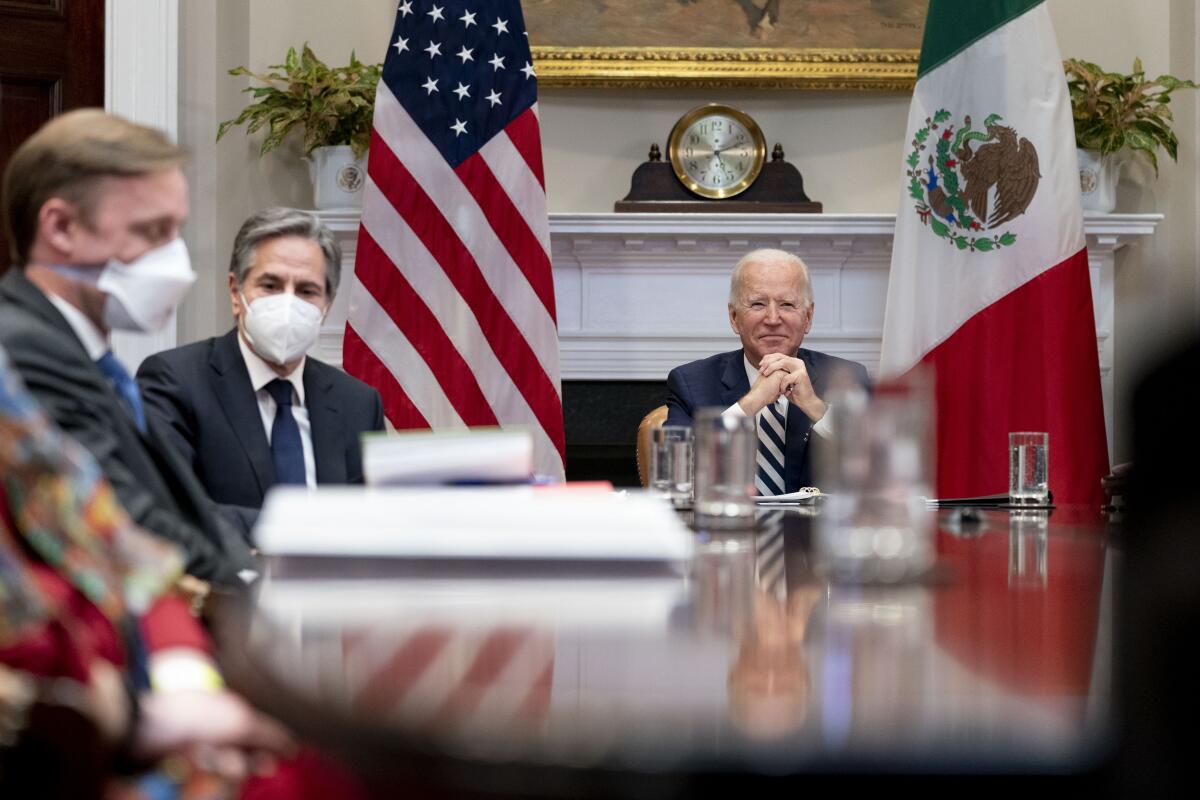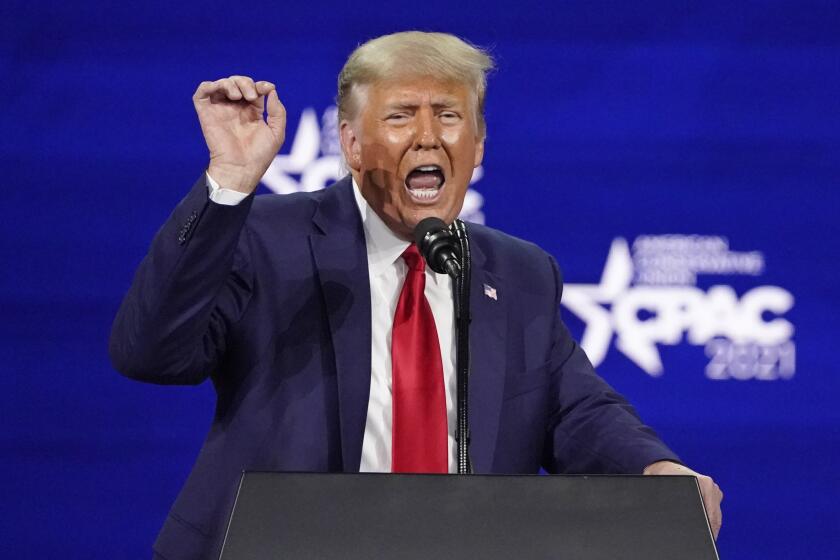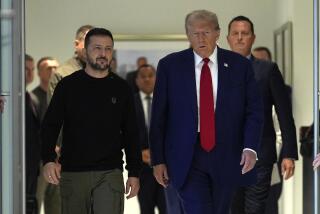Biden’s foreign policy may not be Trump’s — but it’s not Obama’s, either

- Share via
We’re starting to see the outlines of President Biden’s foreign policy, and you won’t be shocked to hear that it’s looking very different from President Trump’s.
But here’s something that may surprise you: Biden’s foreign policy also differs in significant ways from Obama’s.
Trump declared his goal was “America first,” which often meant trashing allies and starting trade wars. It was a noisy way to interact with the world, but it didn’t accomplish much.
Biden promised during the campaign to revive traditional alliances, which he sees as a strategic asset, and dial down the chaos. So far, he looks like a man of his word. He’s already reversed one Trump policy by rejoining the Paris Agreement on climate change, and hopes to reverse another by reviving the 2015 nuclear deal with Iran.
But that doesn’t mean Biden’s approach is merely a restoration of the policies of his former boss Barack Obama.
The Republican National Committee is defending its right to use former President Trump’s name in its fundraising appeals despite his demand they stop.
In several areas, Biden aides say, the new president’s goals — though certainly not his methods — are actually closer to Trump’s.
Take China, the most powerful country challenging the United States. “Our approach is fundamentally different from Obama’s,” an official who served in both administrations told me. “Obama was mainly seeking cooperation; we’re centered on competition.” Sound familiar?
Another partial point of agreement with Trump is on trade, about which Secretary of State Antony J. Blinken offered a striking confession last week.
“Some of us previously argued for free trade agreements because we believed that Americans would broadly share in the economic gains,” Blinken said in a speech. “But we didn’t do enough to enforce [trade] agreements…. Our approach now will be different. We will fight for every American job.”
Past lapses, he added, have left Americans “asking tough but fair questions about what we’re doing, how we’re leading — indeed, whether we should be leading at all.”
Biden’s answer, as he first described during his campaign, is to implement what he calls “a foreign policy for the middle class.” The idea is to put domestic needs first, even when it comes to foreign policy.
“Everything we do in our foreign policy and national security will be measured by a basic metric: Is it going to make life better, safer and easier for working families?” Biden’s national security advisor, Jake Sullivan, told reporters last week.
But the concept isn’t meant only to show voters that the new administration is putting jobs first — although that’s part of it.
It was also born of Biden’s shock in 2016 that voters seemed to embrace Trump’s rejection of a style of foreign policy that both parties had followed for half a century — including his disdain for traditional alliances like NATO and his demands for an end to almost all U.S. military intervention abroad.
What the new administration really wants to achieve, Biden’s aides said, is to make global leadership a popular idea among Americans again, as it was during the Cold War.
In the introduction to his administration’s first foreign policy manifesto, Biden wrote that he wants to “demonstrate clearly to the American people that leading the world isn’t an investment we make to feel good about ourselves. It’s how we ensure the American people are able to live in peace, security and prosperity. It’s in our undeniable self-interest.”
In that sense, Biden’s foreign policy is not only more traditional than Trump’s; it’s also more traditional than that of Obama, who sought to reduce U.S. commitments abroad during the long, disastrous wars in Iraq and Afghanistan.
Obama wanted the United States to do less; he once defined his core doctrine as “Don’t do stupid s—.” Biden wants to do more — but first he needs to convince middle-class voters that an activist foreign policy is worth the costs.
As a theme, “a foreign policy for the middle class” doesn’t clarify many of the decisions the administration will have to make beyond trade and economic issues.
It doesn’t provide a guide for whether the remaining U.S. troops in Afghanistan should be withdrawn. It doesn’t suggest what kind of renewed nuclear deal with Iran is worth pursuing. It won’t solve the perennial problem of balancing competing U.S. interests in trade, security, climate change and human rights in the complex relationship with China. There is no “middle class” policy on most of those questions.
In that sense, foreign policy scholar Hal Brands suggested, the slogan shouldn’t be taken literally; “It might prove unworkable,” he wrote. But he said it still “deserves to be taken seriously.”
Still, give Biden’s aides credit on at least two counts. They’ve tackled a long-overdue rethinking of traditional foreign policy, and they’ve set a clear test for its success: Will it make make life better for ordinary Americans?
“If we do our jobs right, you’ll be able to check our work,” Blinken said.
It’s a courageous challenge — and by 2024, voters will be ready to take them up on it.
More to Read
Get the L.A. Times Politics newsletter
Deeply reported insights into legislation, politics and policy from Sacramento, Washington and beyond. In your inbox twice per week.
You may occasionally receive promotional content from the Los Angeles Times.












